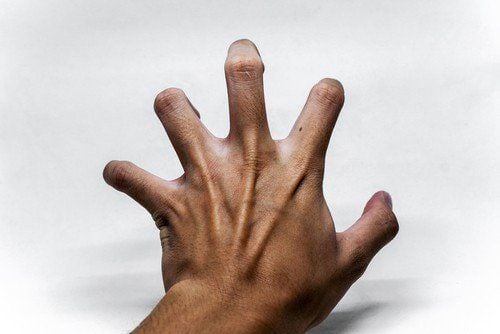This is an automatically translated article.
Sakuzyal is an antiepileptic drug, used to treat seizures in adults and children over 2 years of age. Please refer to the information about the drug Sakuzyal through the article below.1. What does Sakuzyal do?
Sakuzyal 300 has the active ingredient Oxcarbazepine 300mg and Sakuzyal 600 the active ingredient is Oxcarbazepine 600mg. The drug in the dosage form is a film-coated long tablet.
2. Indications and contraindications of the drug Sakuzyal
Indications : Partial epilepsy and primary generalized epilepsy with tonicity and tremor in adults and children over 2 years of age.
Contraindications of Sakuzyal: Do not use this drug if the patient is hypersensitive to any of the ingredients.
3. Usage and dosage of the drug Sakuzyal
How to use: The drug is taken orally.
Dosage:
Adults: Use a monotherapy dose of 600 mg/day, divided into 2 times, effective usually at a dose of 600-2400 mg/day; Multi-therapy 600 mg/day, divided into 2 doses, effective usually at doses 600-2400 mg/day. May be increased by a maximum of 600 mg/day at weekly intervals. Children over 2 years of age: For monotherapy or as a multi-therapy, it may be possible to start at 8-10 mg/kg in 2 divided doses/day; increase by 10 mg/kg/day at weekly intervals if necessary, not to exceed 46 mg/kg/day. Not for use in children < 2 years old. Renal impairment with ClCr < 30 mL/min: A lower dose of 300 mg/day should be initiated.
Overdose:
Some isolated cases of drug overdose have been reported. The maximum dose that has been administered is approximately 24,000 mg. All patients recovered with symptomatic treatment. Symptoms of overdose include drowsiness, dizziness, nausea, vomiting, hyperactivity, hyponatremia, ataxia, nystagmus. Treatment: There is no specific antidote. Treatment of overdose is symptomatic and supportive should be instituted appropriately.
4. Sakuzyal . side effects
Possible side effects when using Sakuzyal 300 or Sakuzyal 600 include:
Common: Fatigue, dizziness; headache, drowsiness, nausea, vomiting; Abnormal gait, muscle tremors; Diplopia, nystagmus, visual disturbances. Less common; Reduce blood pressure, leg edema; agitation, confusion, forgetfulness, unusual thoughts or feelings, insomnia, drug fever; language disorders, cardiac arrhythmias; Erythema, acne. Rare: Hyponatremia; Diarrhea or constipation, abdominal pain, dry mouth, decreased taste, gastritis, weight gain; Urinary disorders; Muscle weakness, back pain, falls, loss or decrease in coordination, dysregulation; Upper respiratory tract infections such as tonsillitis, rhinitis, sinusitis, nosebleeds. Serious hypersensitivity reactions such as anaphylaxis, Steven-Johnson syndrome and toxic epidermal necrolysis may also occur with the drug. You may also experience other side effects when using Sakuzyal, if you experience side effects while taking this medicine you should inform your doctor for advice.
5. Notes when using the drug Sakuzyal
Some things you need to keep in mind when taking this drug:
Use caution in patients who have ever had a hypersensitivity reaction to carbamazepine, as about 25-30% of these patients may be sensitive to Oxcarbazepine. Hypersensitivity reactions may also occur in patients without a history of allergy to carbamazepine. Therefore, if symptoms suggestive of a hypersensitivity reaction occur, Oxcarbazepine should be discontinued immediately. Sodium ion concentrations below 125 mmol/l are usually asymptomatic and do not require dose adjustment. Experience in clinical trials has shown that serum sodium concentrations usually return to normal with dose reduction or discontinuation of Oxcarbazepine or when patients are treated conservatively. In patients who already have renal disease with low sodium levels or who are being treated with drugs that lower sodium levels, serum sodium levels should be measured prior to initiating therapy. Adhere to taking the medicine according to the instructions and re-examination on schedule, if abnormalities occur, you can re-examine sooner. Avoid alcohol in combination with Oxcarbazepine therapy, as that has the potential to increase sedation. As with all antiepileptic drugs, Oxcarbazepine should be tapered off gradually to minimize the potential for increased seizure frequency. Pregnancy: There are currently no controlled studies to evaluate the safety of Oxcarbazepine during pregnancy. Lactation: Oxcarbazepine and its active metabolite are excreted in human milk. The effects of Oxcarbazepine on the neonate by this pathway are unknown. Therefore, breastfeeding while taking Oxcarbazepine is not recommended. Caution should be exercised when using the drug for those who drive and operate machinery, because the active ingredient Oxcarbazepine can cause dizziness and drowsiness.
6. Sakuzyal drug interactions
Drug interactions may occur when high doses of Oxcarbazepine are co-administered with drugs metabolised by CYP2C19 (phenobarbital, phenytoin). Substances that are potent inducers of cytochrome P450 enzymes (carbamazepine, phenytoin and phenobarbital) have been found to decrease plasma concentrations of the metabolite of oxcarbazepine (29-40%). Hormonal Contraceptives: The active ingredient Oxcarbazepine has been shown to work against two ingredients, ethinylestradiol (EE) and levonorgestrel (LNG), in a birth control pill. Studies with other oral contraceptives or implants have not been conducted. Therefore, the concomitant use of Oxcarbazepine with hormonal contraceptives may cause a decrease in the effectiveness of these contraceptives. Storage: Sakuzyal medicine is stored in sealed packaging and in a dry, airy place, the storage temperature is below 30 degrees Celsius, Avoid direct sunlight. Keep medicine out of reach of children.
Thus, Sakuzyal is a prescription drug used alone or in combination for the treatment of epilepsy. Ensure safe medication administration by adherence to treatment and regular monitoring.













